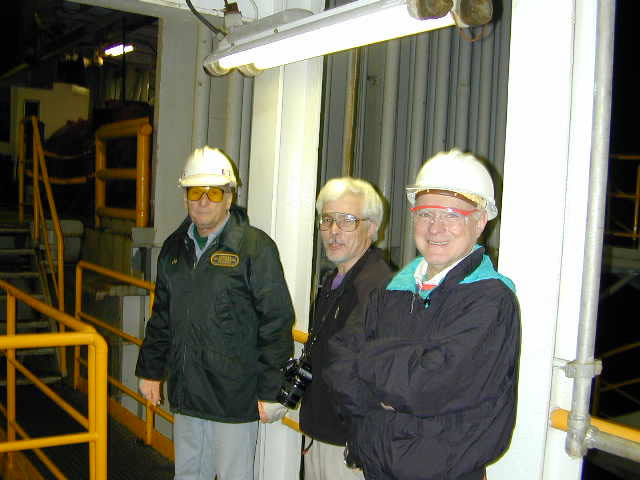
Operations Manager Ron Grout (left), Co-Chief John Tarduno (middle) and scientist William Siesser (right) waiting for the arrival of the next core.

Members of the drilling crew are happy with the excellent core recovery during Leg 197.
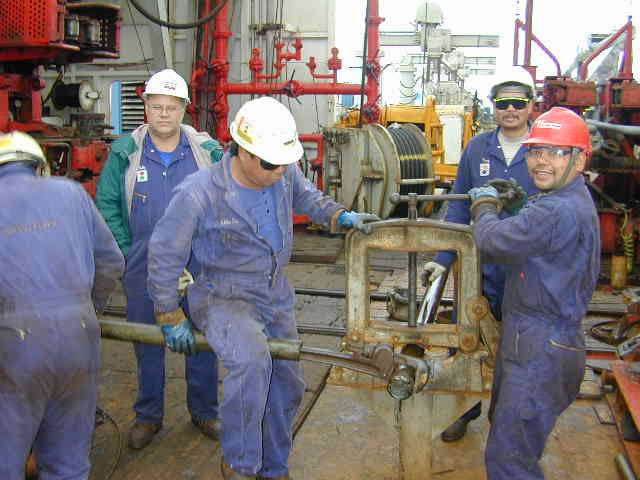
Day-shift crew members braking open the core catcher at the bottom of the core barrel that has just returned to the drilling deck—the tip of a core of basalt (dark green) can be seen just inside the barrel.
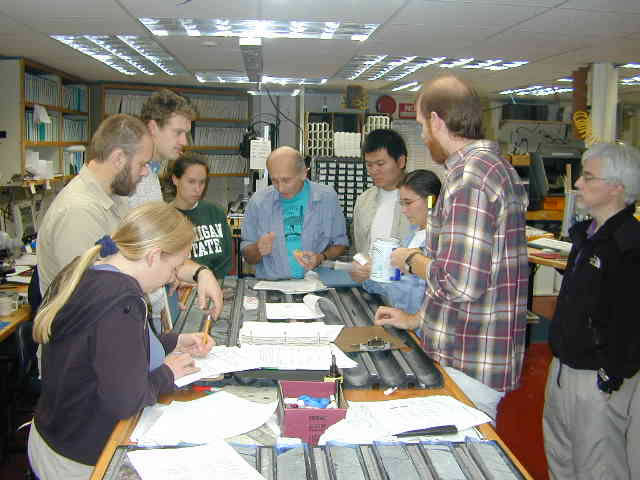
An example of a typical crossover discussion held between the day and night watches (shifts). Watch change occurs at noon and midnight. These discussions keep everyone tuned into the latest findings and thinkings and maintain uniformity in the recording and archiving of observations.
Right: Chad, fully dressed in his immersion suit, comments that he looks like Gumby. All standing around agree that he does.
Below: As part of a routine on-board safety drill, Marine Specialist Chad Peddy practices inserting himself into a Mustang Flotation-Immersion Suit.
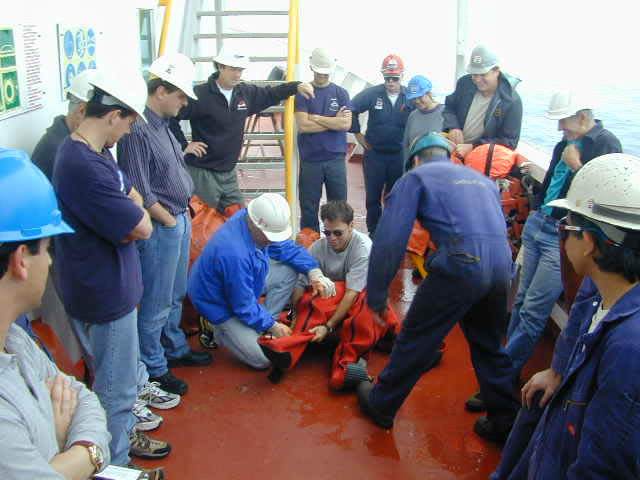
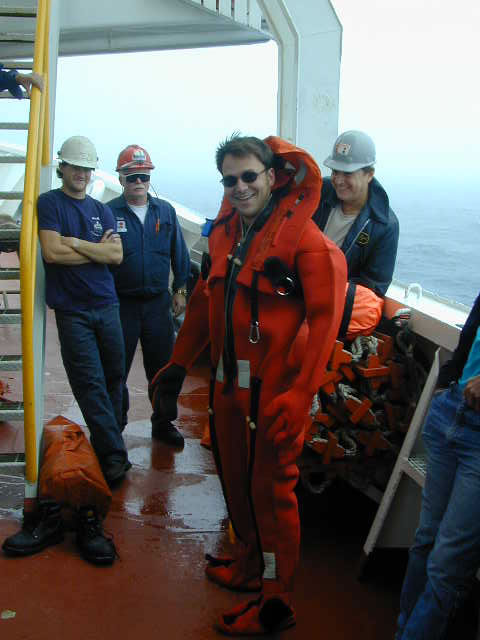
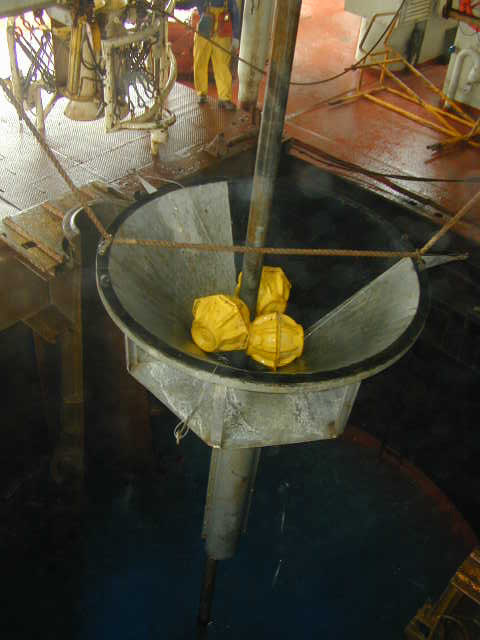
Preparation of the reentry cone, also called a "free fall funnel", at Site 1205. The cone is fastened around the drill pipe, which guides the cone's descent to the summit of Nintoku Seamount. Ropes hold the reentry funnel poised above the moon pool. Cutting the ropes frees the funnel to slide down the drilling pipe. The pipe is then withdrawn from the hole and through the reentry cone for a bit change. The cone, resting on the seafloor over the hole, guides the drill pipe, with its new bit attached, back into hole.
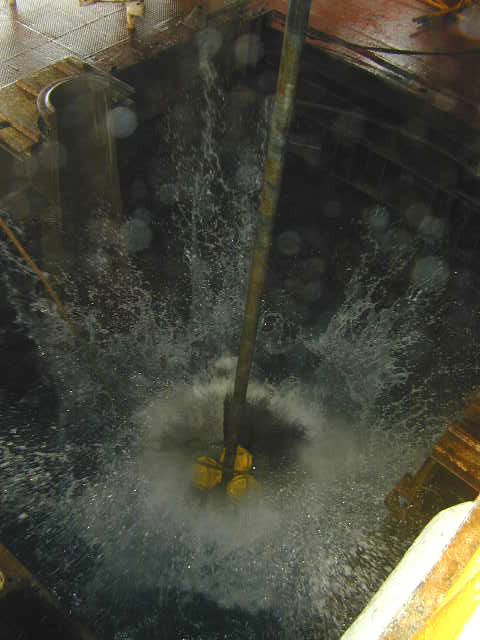
And we have splash-down! The funnel is released into the moon pool to begin its 1309-meter descent to the summit of Nintoku Seamount. Little did we know that a challenging reentry adventure awaited us.
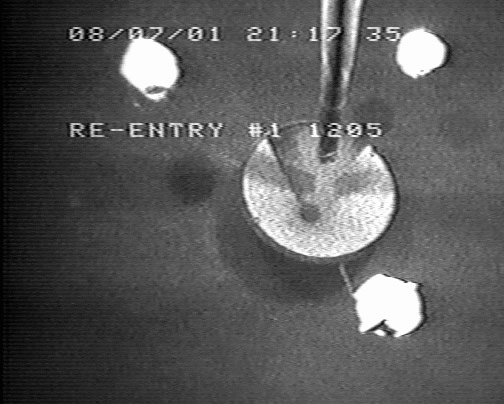
The bit, at the tip end of the drill string, has been maneuvered directly over the throat of the reentry cone, ready to be lowered into the hole. All seems perfectly fine.
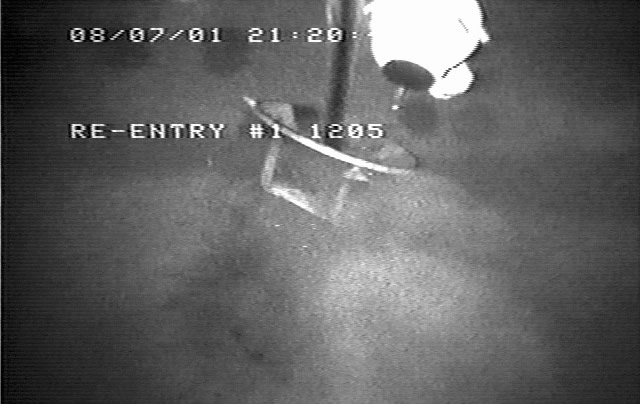
The leading or downward taper of the funnel, when it landed on the hard, sandy surface of Nintoku Seamount, refused to enter the hole. Instead it resulted in the funnel being perched above the bottom as if it were a golf tee. As the drill bit touched the flare of the funnel to reenter the hole, the funnel toppled over. Now what to do?
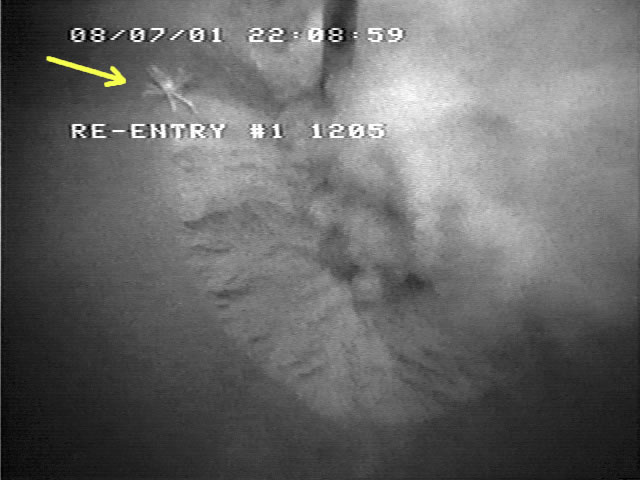
As shown here, a large crab named Charlie scurried over and with claw gestures helped the driller locate the hole hidden beneath a cloud of sediment stirred up by the bit bumping across the bottom. All aboard cheered the driller's skill and the crew maneuvering the vessel, but were sorry for having messed up Charlie's deep-water home.

Shipboard scientists prepare styrofoam mugs for an important high-pressure experiment. The mugs are painted with personalized designs prior to being attached to the deep-sea camera that will document the reentry operations.
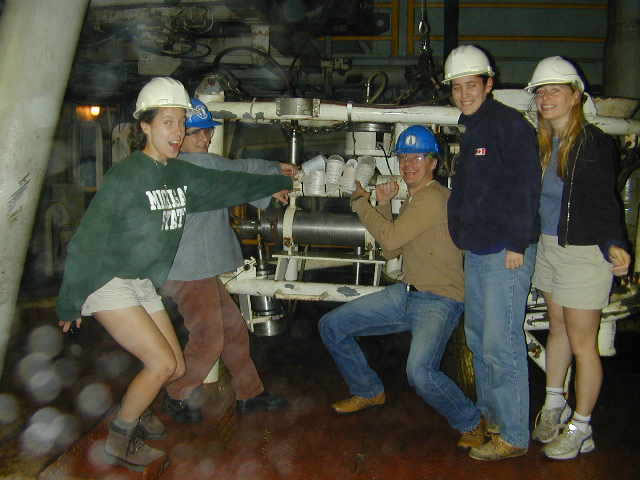
Here they are, attaching their "designer" cups to the deep-sea camera, just before it is lowered to a depth of 1309 meters (~130 atmospheres of pressure).
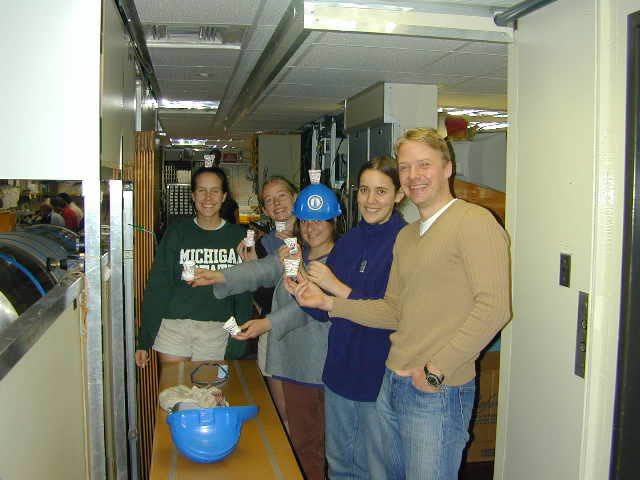
And here are the results. Now you know what a pressure of ~130 bars (~2 tons/square inch) will do to a styrofoam cup.
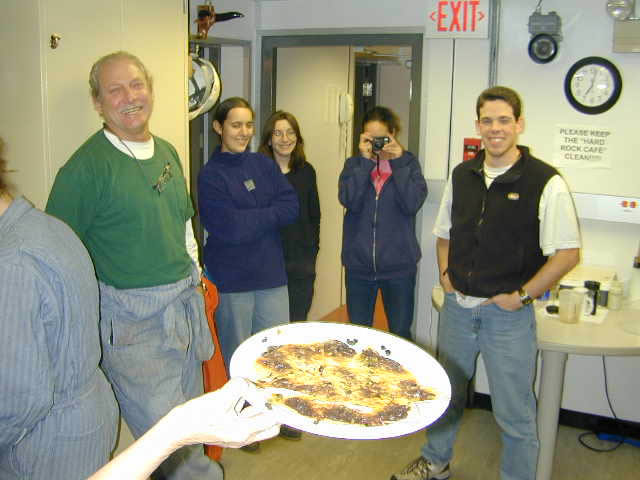
Birthdays are not only celebrated onshore: delicious food being served on Bob's birthday (Bob Olivas smiling on the left).
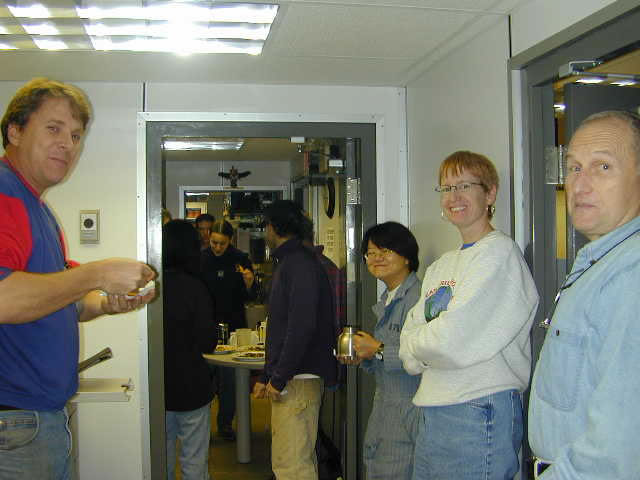
Scientists attending the birthday celebration, a welcomed moment of distraction from their watch duties, which go on for 12 hours each day, every day of the week.

A cappuccino concert is held in the core tech shop. Paleomagnetic geoscientist Claire Carvallo (Canada) is giving a violin performance to crew members Colin Bremner (UK, back chair), Sam McLelland (USA, seated right), electronic technician Martin Leven (Germany, standing), and logging scientist Florence Einaudi (France).

Official group picture of Leg 197 scientists assembled on the rooftop of the laboratory section of the JOIDES Resolution. The drilling derrick is in the immediate background.